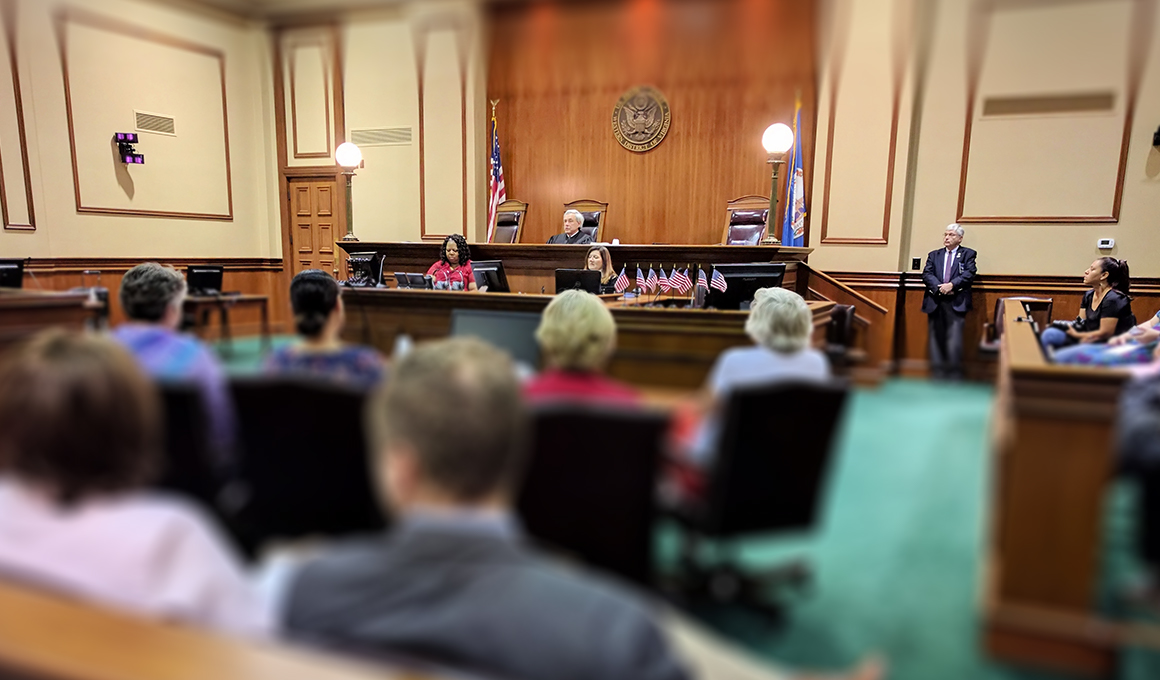Exactly How Trial Presentations Enhance Your Disagreement and Encourage Jurors
Trial presentations function as a crucial device for improving lawful debates and convincing jurors. By integrating visual help, narrative structures, and psychological engagement, attorneys can produce an engaging situation that reverberates on several levels. The tactical use visuals not just makes clear complex info but also captures jurors' focus a lot more successfully than words alone. Nevertheless, the art of storytelling plays a just as critical function in changing factual evidence right into a compelling narrative, forming jurors' perceptions - trial presentations. Comprehending these elements can dramatically affect trial results, raising the question of just how each component adds to this elaborate dynamic.

Relevance of Visual Help
Aesthetic aids play a crucial duty in improving the performance of trial presentations, as they can substantially enhance target market interaction and retention of information. In the context of a trial, where jurors are tasked with handling complex info, aesthetic aids offer to simplify and make clear bottom lines. Charts, charts, and images can communicate information and ideas that might otherwise bewilder or perplex jurors, permitting an extra straightforward understanding of the proof presented.
Additionally, aesthetic aids assist in keeping juror attention throughout the procedures. By damaging the monotony of spoken testament, these tools can stress critical disagreements, making them extra memorable. Efficient aesthetic aids can also stimulate psychological responses, which can be critical in encouraging jurors to align with the presenter's story.

Crafting Compelling Narratives
An engaging story is essential in test presentations, as it acts as the backbone of efficient persuasion. It allows attorneys to weave together facts, evidence, and emotional aspects into a coherent tale that reverberates with jurors. This narrative framework enables jurors to comprehend the intricacies of the instance while leading them through the attorney's disagreement.
To craft an engaging narrative, attorneys ought to focus on clarity and comprehensibility. In addition, the usage of brilliant summaries can produce mental images that help jurors envision the occasions, making the narrative much more memorable.
Moreover, incorporating crucial styles throughout the presentation reinforces the core message and help in retention - trial presentations. The narrative ought to not just share info yet also stimulate a feeling of justice, highlighting the stakes entailed. Eventually, a well-constructed narrative cultivates a connection between the jurors and the instance, positioning the attorney's debate as both qualified and engaging, thereby raising the probability of a beneficial verdict

Engaging the Jury Emotionally
Efficient court interaction rests on the attorney's capacity to get in touch with jurors on a psychological level. This connection can significantly affect jurors' perceptions and their utmost decision-making. Making use of sob stories allows attorneys to humanize the instance, transforming abstract legal principles into relatable experiences. By providing real-life tales or testimonials, lawyers can stimulate empathy and empathy, cultivating a much deeper understanding of the issues at stake.
Aesthetic help, such as photographs or videos, can even more improve psychological involvement, providing jurors with vibrant depictions of the instance's human components. Crafting a narrative that highlights the struggles and triumphs of the individuals included makes sure that jurors see past the lawful debates and identify the human consequences of their decisions.
Furthermore, tone and body language play a critical duty in sharing feeling. A lawyer's enthusiastic distribution can reverberate with jurors, enhancing their psychological financial investment in the event. It's important to balance emotional appeals with factual proof, ensuring that jurors really feel urged to act while continuing to be based in the fact. Inevitably, a psychologically involved jury is most likely to be persuaded, making psychological link a crucial element of efficient trial presentations.
Structuring Your Presentation

The body of the presentation must be realistically browse around these guys fractional into key factors, each supported by engaging evidence. It is valuable to utilize narration methods to weave realities into a story that jurors can quickly adhere to. Visual help, such as charts and video clips, can enhance comprehension and involvement, assisting to highlight critical pieces of proof.
Real-World Case Researches
Analyzing real-world study supplies important understandings right into the art of test presentations and persuasion. For example, the spots case of "O.J. Simpson v. The People of California" shows just how visual aids and engaging stories can guide jury understandings. The protection group effectively utilized an approach that combined high-profile professional testaments with multimedia discussions, which captivated jurors and ultimately influenced their decision.
One more significant instance is the "McDonald's Coffee Situation," where the complainant's lawyers used graphic pictures visit of the injuries suffered by Stella Liebeck. trial presentations. This plain visual evidence played an essential role in conveying the severity of her burns, leading to a significant jury honor. Such instances show that impactful trial presentations frequently hinge on the effective assimilation of visuals and narration to evoke emotional responses from jurors
Furthermore, the "Casey Anthony Test" highlighted the value of narrative comprehensibility and trustworthiness. The prosecution's failure to establish an engaging timeline reduced their convincing power, underscoring the need of a well-structured discussion. Evaluating these cases discloses that successful trial discussions need strategic preparation, discover here emotional engagement, and the capacity to resonate with jurors' worths and ideas.
Conclusion
Test discussions considerably boost arguments and convince jurors via the strategic use of aesthetic help, compelling stories, and psychological engagement. A well-structured presentation equilibriums psychological appeals with accurate proof, ultimately resonating with jurors' values.